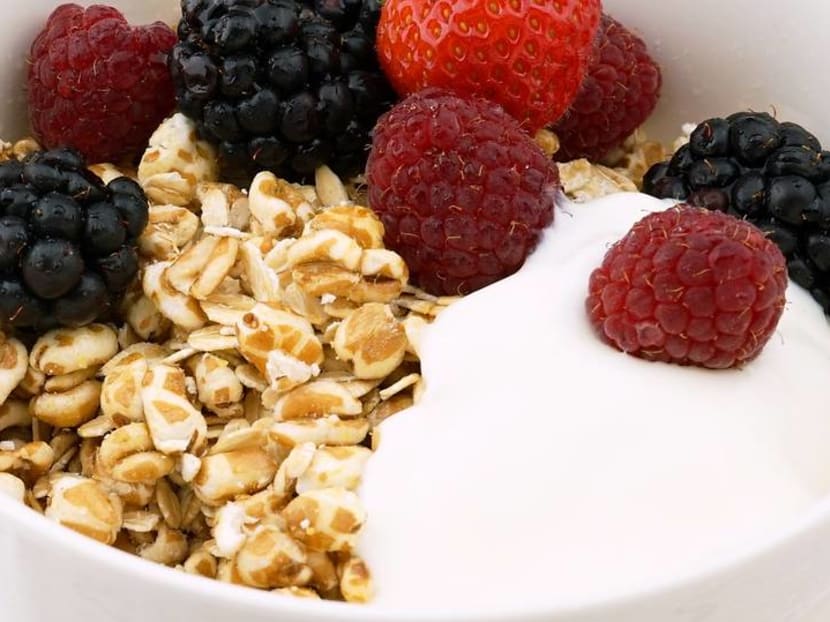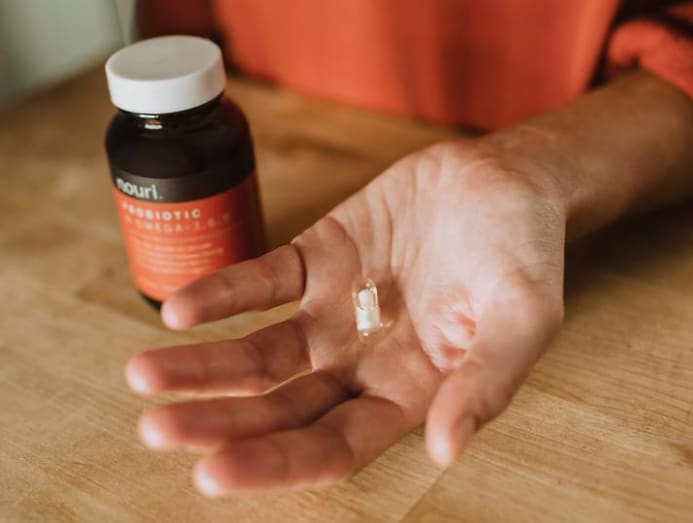Need more probiotics in your diet? Find out which foods are better for your gut
It can be confusing deciding what to order at the food court or what to buy at the supermarket. You want foods that deliver the highest amount of probiotics, but what exactly are those?

Other than yoghurt, there are other options that help you to include probiotics in your diet. (Photo: Pexels)
You've heard about probiotics and are keen to include these gut-friendly bacteria in your diet. But which food items will have the most impact on your gut health: The cultured milk drink or yoghurt?
Also, is that kimchi or miso soup in your set meal worth having?
Adults need about 1 billion to 10 billion colony-forming units (CFUs) of probiotics a day, said Jaclyn Reutens, a clinical and sports dietitian, and founder of Aptima Nutrition & Sports Consultants.
And for fermented foods to qualify as probiotic foods, they “should contain 1 million to 1 billion viable microbes per gram or per millilitre of the food,” said Caleb Mok, a dietitian with PanAsia Surgery.
READ: Anxious? Depressed? Indigestion? Experts say kimchi or yoghurt can help
Another example: The small serving of kimchi that comes with your Korean set meal may have 2 billion to 3 billion CFUs per serving. And that bowl of miso soup? Fifty thousand to 60,000 CFUs per tablespoon of miso, said Reutens.
Does this mean there's no point in eating yoghurt? Not so fast. "You need to look at the other nutrients present in the food to decide if it’s worth eating," said Reutens.

LOOK BEYOND YOGHURT AND KIMCHI
There are four main families of probiotics, according to Mok: Lactobacillus, bifidobacteria, lactococcus, and saccharomyces. But you needn't obsess over the types of probiotic strains in your food, he said.
Instead, you're better off eating a wide variety of probiotic foods.
“Most probiotic foods are loaded with a variety of probiotic strains, which can be up to hundreds of different species,” explained Mok.
To that effect, your options aren’t limited to kimchi and yoghurt. Sourdough bread and some cheeses (certain cheddars, gouda and cottage cheese) are good to try, too.
And instead of miso paste at the Japanese supermarket, you could pick up some natto, traditional Japanese fermented soybeans, though some would say it's an acquired taste.
Local foods contain probiotics as well. The next time you’re having Indian food, order a glass of lassi to wash down that fish curry. Or include sambal tempeh at your next nasi padang lunch with colleagues.
KEEPING PROBIOTICS WORKING FOR YOU
If you think that including probiotic foods in your diet means your digestive system is taken care of and that gives you the licence to eat as you please, you’re sadly mistaken.
Stuffing yourself with probiotic foods isn’t going to do you good if you don’t watch your diet, said Mok.
He added that the growth of probiotics in your gut can be stymied by a low fibre intake, foods high in unhealthy fat, sugar and salt, and foods that are highly processed.
Even smoking, alcohol intake, inadequate rest and the lack of exercise can affect how well the probiotics work in your gut.
To benefit from probiotics, they have to be alive and in the right place. To keep probiotics alive, temperature is important.
“Depending on the probiotic species and the food, the optimal storing temperature is usually between 2 degrees Celsius and 8 degrees Celsius,” said Mok.
The cooking process matters, too. “Avoid high temperatures when cooking probiotic foods like miso, tempeh and cheeses.
Adding these foods at the end of the cooking process and removing the dish from heat immediately are some ways to preserve the probiotics in the foods,” he said.
The right place for probiotics to work their magic is in your small intestine, and not your stomach. So, in order for these little guys to be effective, they have to survive the stomach’s strong acid bath.
“Most strains from the lactobacillus, bifidobacteria and streptococcus families can endure stomach acid and reach the small intestine,” said Mok.
The probiotics that do will have to survive another round of digestive enzymes in the intestine before they’re able to recover and colonise it.
READ: Supplements and diets for heart health show limited proof of benefit
WHAT TO CONSIDER WHEN CHOOSING PROBIOTIC SUPPLEMENTS
Like vitamins and minerals, probiotics may be lacking in your diet if you don’t eat a balanced and varied diet – or if you don’t particularly enjoy the flavours of fermented foods.
This is where supplements can come into the picture.
But finding the right probiotics may take some trial and error, said Professor Gail Cresci, an intestinal microbe specialist with Cleveland Clinic’s Department of Gastroenterology, Hepatology and Nutrition.
And hitting the jackpot may actually mean bloating, gas and changes in your stool patterns. “If you notice no benefits from one product after a few weeks, try a different one with a different strain of bacteria,” she said.

As for overdosing on probiotic supplements, Dr Melvin Look, the director of PanAsia Surgery at Mount Elizabeth Hospital, Mount Elizabeth Novena Hospital and Parkway East Hospital, said it is rare.
“But the side effects of probiotics are possible even if you keep within the recommended dosage.”
Even probiotic foods can cause side effects, especially if the protein they contain undergoes fermentation and becomes natural amines.
“This can cause headaches by exciting the brain in some people,” said Dr Look. “Yeast-based probiotics can cause constipation. You can also get allergic-type reactions to certain constituents contained in the probiotic.”
If you’re keen to shop for probiotics, here’s what the experts say to look for:
- At least 1 billion colony forming units (CFUs)
A general recommendation is to opt for probiotic supplements with a recommended daily dosage of between 1 billion and 10 billion CFUs for adults, said Dr Look.
- ‘Enteric coated’ or ‘acid resistant’
Either of those words on the label means that the probiotics are protected against the acidic environment of the stomach, said Mok.
- Target your health problem
It might pay to, well, pay a little more for a brand that has studied the health problem you have. “Ideally, look for a product that’s been tested for whatever you’re looking to address,” said Prof Cresci.
Also, not every probiotic is suitable for everything that concerns digestion.
Say, a product is supposed to help with irritable bowel syndrome; but you wouldn’t take it if you were on antibiotics.
Instead, you would want a product that helps with immunity, said Prof Cresci, and that’s where people get confused.
- Look for prebiotics, too
A good probiotic supplement should also offer prebiotics, the food for probiotics.
“Some supplements called synbiotics contain a combination of probiotics and prebiotics,” said Dr Look.
Mok explained that “prebiotics are actually fibre, mainly soluble fibre, which can be found in fruits, wholegrains, tubers, some vegetables, and certain micro-algae”.
When shopping for probiotics supplements, see if it contains common prebiotics such as fructooligosaccharide, inulin, mannose and xylitol.





